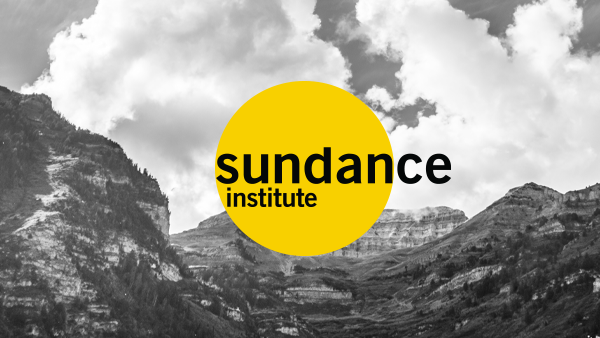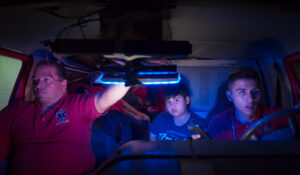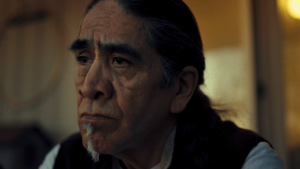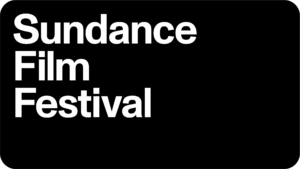Sundance Institute
Sundance.org is dispatching its writers to daily screenings and events to capture the 10 days of festivities during the Sundance Film Festival in Park City, Utah. Check back each morning for roundups from the previous day’s events.
The Internet’s Own Boy: The Story of Aaron Swartz
By Nate von Zumwalt
For a federal criminal case lacking a verdict, United States v. Aaron Swartz produces plenty of alarming answers. Perhaps most salient among them is that the defendant’s death was utterly avoidable, if not criminal itself. That well-supported notion permeates Brian Knappengberger’s U.S. Documentary Competition selection The Internet’s Own Boy: The Story of Aaron Swartz, a film that follows the late computer programmer’s ascent from childhood prodigy to flourishing startup developer to sociopolitical activist. Only one year after his death, and with unbridled access to Swartz’s family, friends, and colleagues, Knappenberger’s documentary takes on one of the most pressing and convoluted issues facing our modern digital world: access to information.

Between 2011 and 2012, Swartz was indicted on a handful of federal charges for downloading academic journal articles from the online service JSTOR via the MIT network. As detailed in the film, Swartz was not merely caught in the act of physically connecting his laptop to a network switch at MIT; rather, the Secret Service (yes, that Secret Service led this case) began to document his illicit activity in order to build a case that would incarcerate him for 35 years and brand him a lifetime felon. It’s that seemingly cutthroat pursuit of Swartz’s prosecution that pulses throughout The Internet’s Own Boy, eventually leading the 26-year-old activist to take his own life and leaving an indelible black eye on the face of the U.S. government.
At the film’s premiere on Monday, Swartz’s father (Robert Swartz) and two brothers joined director Brian Knappenberger on stage to field audience questions after receiving an expressive standing ovation.
“All of this is unbelievably hard for us,” explained a still weary sounding Robert Swartz only a year after his son’s death. “Aaron is dead–there’s nothing we can do about that. But we can try to make the world a better place.”
A palpable pathos loitered among the full house that stayed for the Q&A, and the Swartz family was laconic yet profound in airing their grievances around the unnecessary death of their loved one. “There was no victim. JSTOR said they weren’t interested in prosecuting. What was going on here?,” asked Robert Swartz. “The government said, ‘Well we need this for deterrent.’ It all made no sense.” The question still lingers, who are the real victims here?
With a verdict forever wanting, one conclusion can be had: the prosecutorial efforts surrounding Aaron Swartz’s federal case ran wild and without warrant.
20,000 Days On Earth
By Eric Hynes
Anyone who expected a standard issue rock doc about Bad Seeds frontman, poet, novelist and screenwriter Nick Cave from 20,000 Days on Earth, which had its world premiere at the Egyptian Theater on Monday night, was in for a surprise. The film, which screens in the World Dramatic Competition at the Festival, eschews standard narrative structure for a number of idiosyncratic but confidently deployed conceits toward understanding the artist and man better, including a candid interview with Cave by a psychoanalyst, archival photos projected against the wall of a cramped office that resembles a detective agency, and a series of rainy car drives through Cave’s chosen town of Brighton with key figures from his life (Ray Winstone, Blixa Bargeld, Kylie Minogue). Filmmakers Iain Forsyth and Jane Pollard, as well as Cave himself, were on hand for a post-screening Q&A.

Forsyth and Pollard said they’d been collaborating with Cave in various forms for seven years before they embarked on this project, which coincided with developing the latest Bad Seeds album. “Nick thought that he could cope with having us in the studio when he was making and demoing and writing Push the Sky Away,” Pollard said. “We knew we had to make it into something much bigger than a standard promotional sort of doc, that it had to be something a lot more ambitious and crazy.”
Though the filmmakers had intimate access to the demoing, writing, and making of the album, and included long, unbroken sequences of both studio and concert recordings in the final cut, key elements of the film didn’t materialize until Nick let them look through his notebooks. “We started dialing through all of the discarded lyrics, all of the songs that didn’t become anything—just an amazing amount of stuff—and began to find phrases that really rang, that did something for us instinctually,” Pollard said. “And one of them was this odd calculation that he’d been on earth for 20,000 days, and that strange odd phrase, 20,000 Days on Earth, immediately became the film’s title. We didn’t know why or how, but it stuck. So much came from Nick’s notebooks. The entire opening scene in the bedroom, the voiceover was all there, it was a discarded lyric and we just took it.”
Pollard said that they referenced films like the Led Zeppelin doc The Song Remains the Same, Godard’s One Plus One, and Lindsay Anderson’s O Lucky Man! when making the film, noting that she considers all of those films to be failures but wildly ambitious ones. “This is the first time we’ve done this, and I hope we get to do it again, but we didn’t really have a career to waste, so we had to just go with it,” she said.
When someone from the audience asked whether they considered the film to be a documentary or autobiography or, perhaps, a “psychodrama,” Cave quickly responded: “Psychodrama. Just take out the drama bit.” He and the filmmakers nodded for another moment before Cave said, “We like that. Thank you.”
Riffing on a lyric from the song “Higgs Boson Blues,” a woman from the audience asked of Cave, whose legendarily lean frame was dressed in a familiar dark suit and open white collared shirt. “Before you leave tonight, can I feel your heartbeat?”
“There were a thousand answers that went through my mind just now,” he said. “We can talk about it later. It’s beating very fast at the moment.” He then took a dramatic pause before adding. “Sure. Form a queue.”
#FreeFail
On Day 5 of the Festival, we celebrated failure with a day-long series of panels and other events. Artists and cultural luminaries led discussions and workshops designed to embrace failure as essential to risk-taking, innovation, and the creative process. Check out some highlights from #FreeFail below.
Women In Film
By Eric Hynes
At the annual Women in Film Brunch, which swelled this year to fill the warehouse-sized room at The Shop in Park City with a growing community of female film professionals, optimism for and commitment to change were in very large supply. A year after research showed that women directors and producers were grossly underrepresented in both Hollywood and Sundance Film Festival films, Sundance Institute Executive Director Keri Putnam and President of Women in Film Cathy Schulman introduced new research as well as initiatives for directly responding to the findings.
“It was very clear to us that we needed to be armed with statistical research. There’s an absolute power in numbers,” Schulman said about the commissioned study led by Stacy Smith of USC’s Anenberg Center on Communication Leadership and Policy. As announced at last year’s brunch, Smith found that from 2002-2013 only 16.9% of directors of U.S. Dramatic films at the festival were directed or produced by women, while in mainstream Hollywood films the number dropped to below 5%.
“The facts weren’t good. But that wasn’t a surprise. The goal was to understand them better,” Schulman said. “The research study’s key takeaways were that access to and knowledge about financing, lack of mentorship networks, and lack of awareness about the scope of the problems were the main impediments.”
In terms of financing and mentorship, Putnam introduced a new professional coach-matching program to the women’s initiative fellowship, and talked about an expanded network of allied organizations. “We reached out to organizations that had been way ahead of us in this space,” she said.
This year’s version of the study declared there has been “no meaningful change in representation of American women directors and producers at the Sundance Film festival,” and found that representation remains significantly higher within documentaries and within categories that showcase first films—suggesting that women still struggle to mount sustained careers within the narrative arena.
But in new research focused on American filmmakers in the Sundance filmmaker’s labs, Smith found some intriguing and encouraging numbers. In the Feature Film Program (FFP), which supported 116 projects from 2002-2013, 77 had a sole male director, while 39 had a female attached (33% of the whole). Of these two groups, both had a completion rate of 41%, and of the 81% of these projects that were accepted into the top ten film festivals worldwide, 33% had a female director—identical to the percentage of those that received lab support. “Labs level the gender playing field,” Smith said. “Labs launch female filmmaker’s careers.”
As for the Documentary Labs, Smith found that 66% of projects are female directed, and that there are no gender differences in the 85% completion rate.
“In the findings we saw that women with support succeed at equal rates,” Schulman said, using Smith’s to illuminate a path forward for change on a much greater scale. “Imagine the support that now the allied organizations can give, and in our further reach, the support that the industry can be taught to give, and how we can equal the playing fields all the way to the top.”
That’s it for Day 5. Check out this Instagram Video roundup from @NowThisNews:




